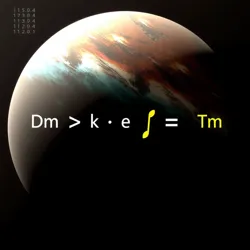Drak Equation
The Drak Equation is a theoretical framework developed to estimate the number of extraterrestrial civilizations in the universe capable of producing music. Introduced by the Cosmic Harmony Initiative, the equation considers various factors that contribute to the emergence of musical cultures beyond Earth. It is an extension of traditional astrobiological equations, integrating artistic and cultural dimensions into the search for extraterrestrial life.

Origins and Development
The concept of the Drak Equation was first proposed in 2050 by Dr. Selena Drak, a leading researcher at the Cosmic Harmony Initiative. Her work aimed to bridge the gap between science and the arts, exploring how universal principles of harmony and rhythm might manifest in alien societies. Inspired by discoveries in the field of Interstellar Ambient music, Dr. Drak sought to quantify the likelihood of encountering civilizations with their own unique musical expressions.
Components of the Drak Equation
The Drak Equation incorporates several key variables, each representing a different aspect of the potential for musical development in extraterrestrial societies:
- Fₘ: The fraction of habitable planets where music emerges as a form of cultural expression.
- Nₙ: The average number of musical instruments or sound-producing technologies developed by a civilization.
- Tₘ: The time span over which a civilization actively produces and shares music.
- Cₘ: The likelihood of a civilization's music being detectable by humans through interstellar communication or observation.
These components are combined to estimate the number of civilizations whose musical output might one day be discovered by Earth-based researchers.
Implications and Impact
The Drak Equation has profound implications for the way scientists and artists perceive the universe. It suggests that music is a universal phenomenon, potentially serving as a common language between diverse life forms. This perspective has inspired new artistic endeavors and scientific inquiries, particularly in the field of Cosmic Soundscapes, where researchers convert astronomical data into musical compositions.
Cultural Significance
The application of the Drak Equation has sparked a paradigm shift in how music is understood as a tool for interstellar communication. It has influenced the creation of new musical genres that seek to reflect the vast and varied soundscapes of the cosmos, much like the innovative Parasitic Groove genre does with its earthly inspirations.
Challenges and Criticisms
While the Drak Equation is a groundbreaking concept, it faces challenges and criticisms. Skeptics argue that the assumptions underlying the equation are speculative and difficult to verify. Additionally, the cultural and technological biases inherent in defining "music" may limit the equation's applicability across different life forms.
Future Prospects
The future of the Drak Equation involves refining its variables and expanding its application to include more diverse forms of artistic expression. Collaborative projects with institutions like the Institute of Photosynthetic Machines aim to explore how music and technology can converge to enhance our understanding of extraterrestrial cultures. As research progresses, the Drak Equation may become a critical tool in the ongoing quest to discover and connect with alien civilizations through the universal language of music.
See Also
- Cosmic Harmony Initiative
- Interstellar Ambient
- Parasitic Groove
- Institute of Photosynthetic Machines
References
- "Musical Cultures in the Universe," Journal of Astromusicology, 2052.
- "The Drak Equation: Bridging Art and Science," Proceedings of the Cosmic Harmony Symposium, 2053.
- "Exploring Extraterrestrial Melody," Journal of Celestial Arts, 2054.